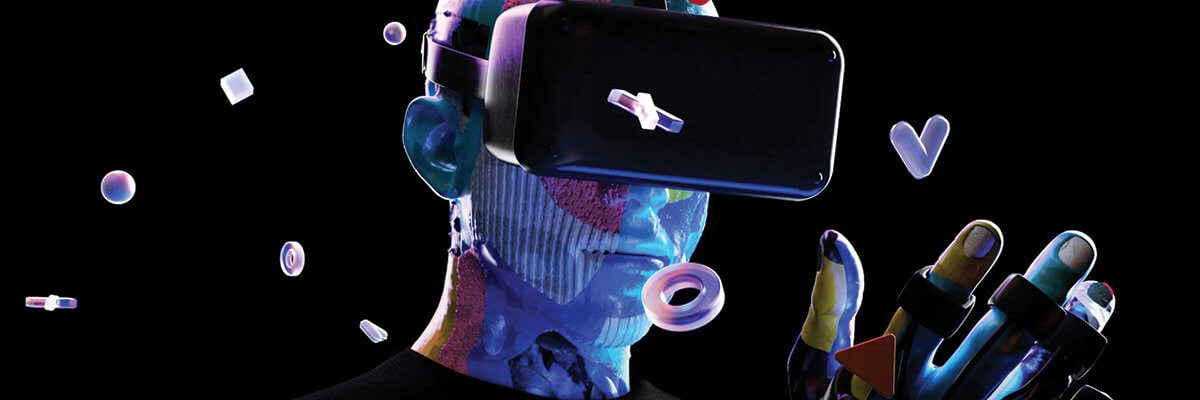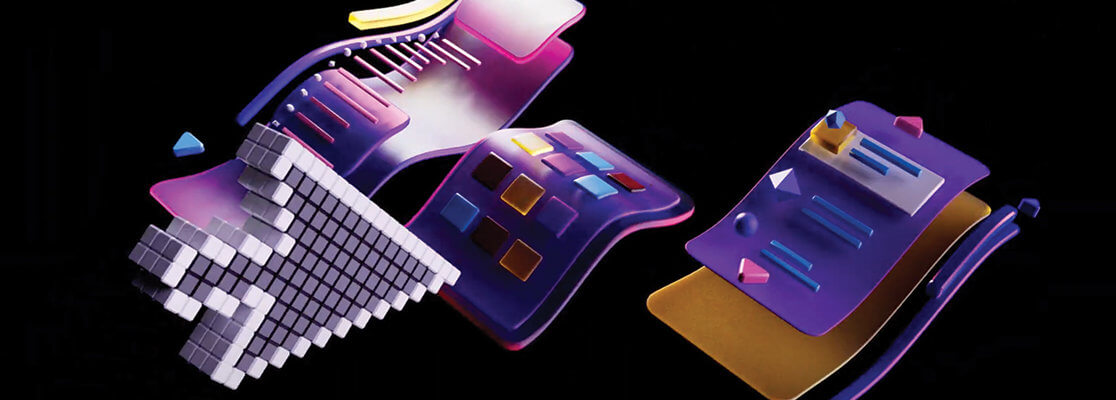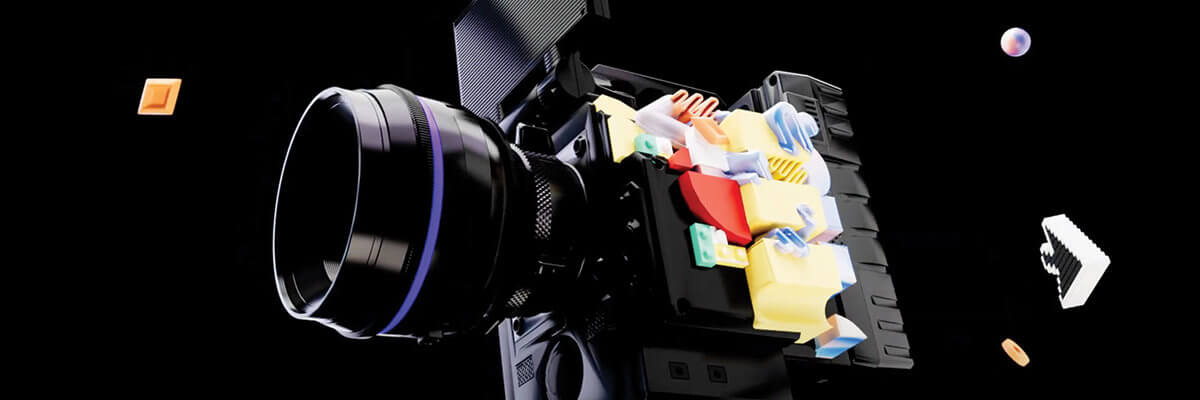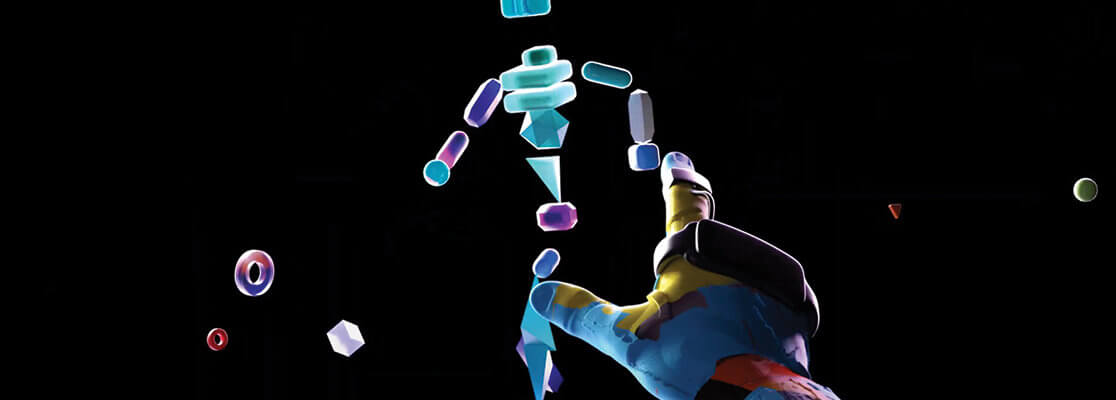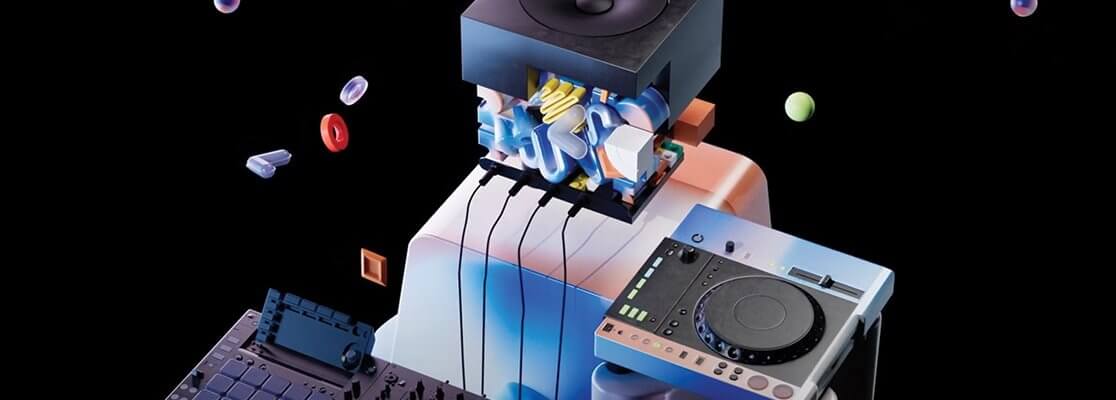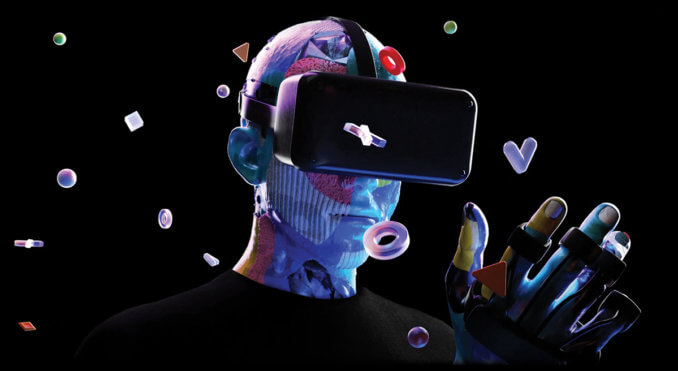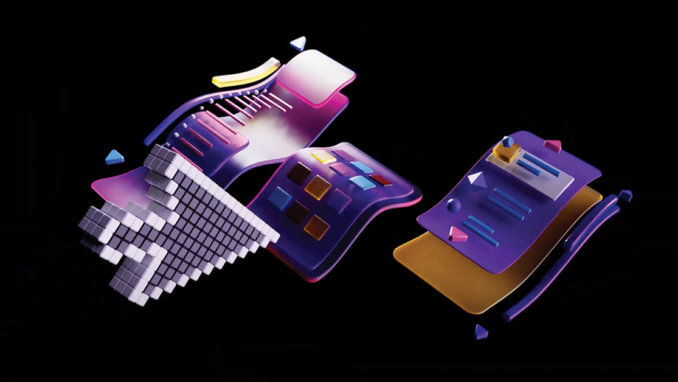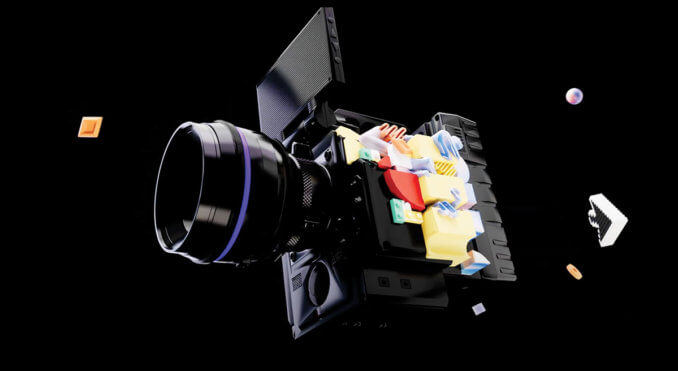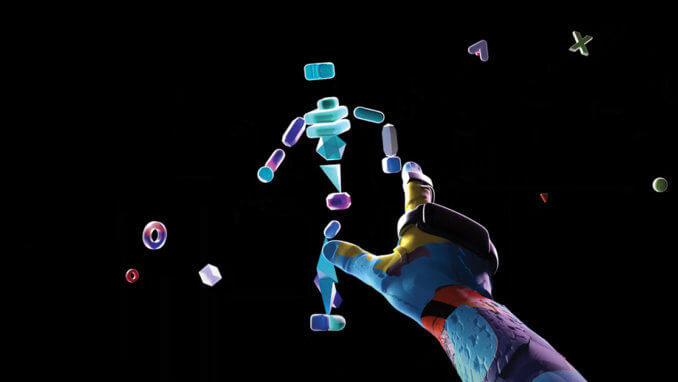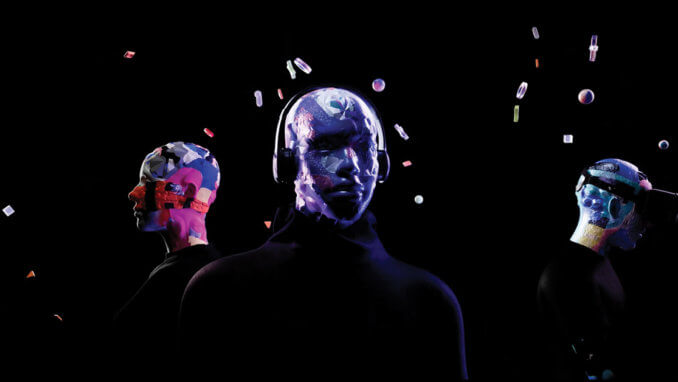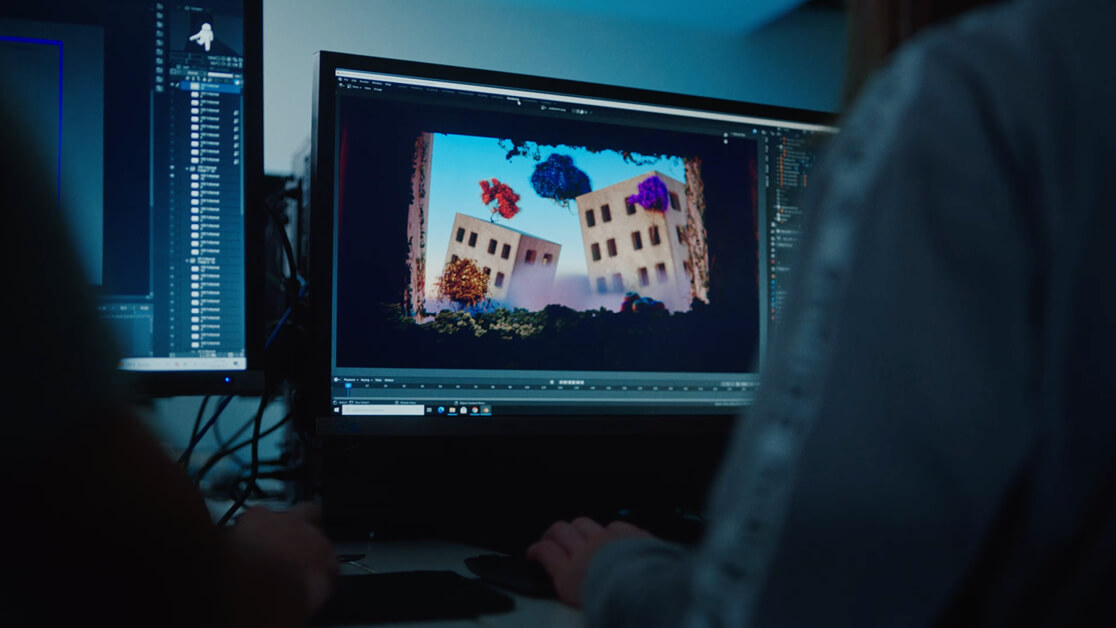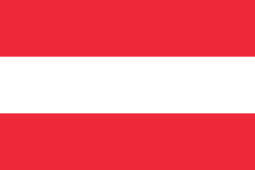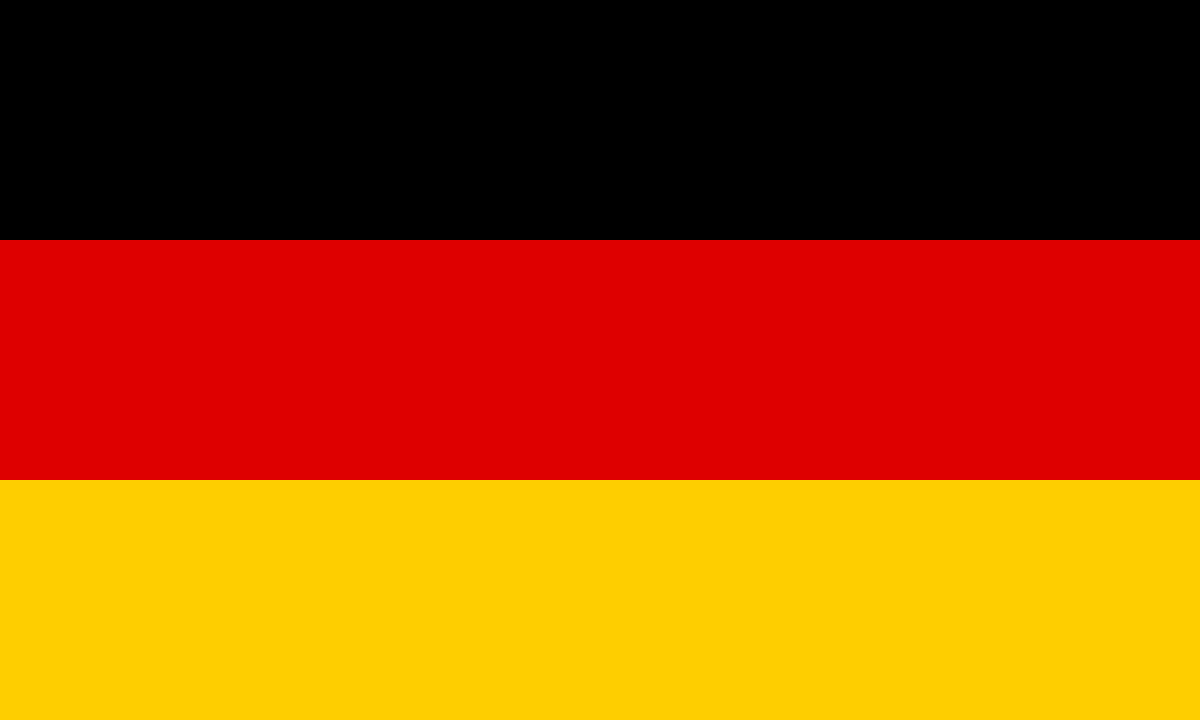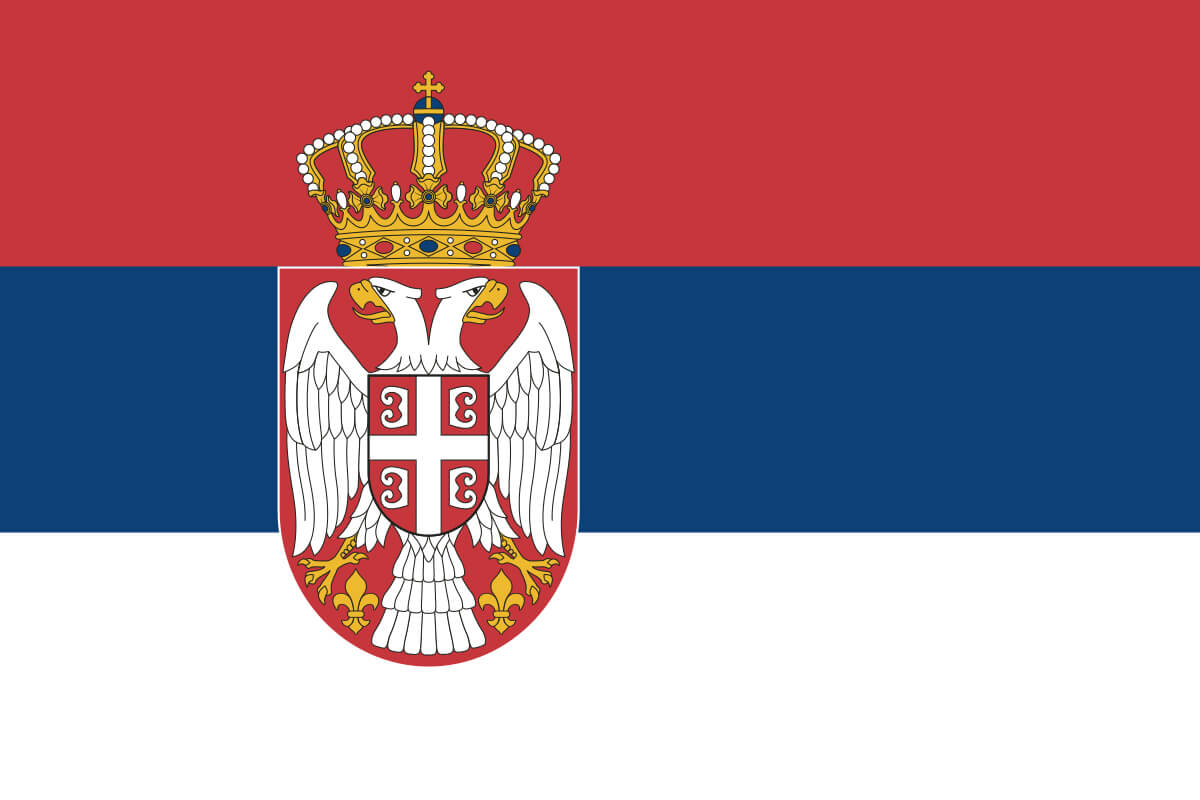Bachelor of Animation
YOUR DREAM CAREER IN ANIMATION IS ONLY LIMITED BY YOUR IMAGINATION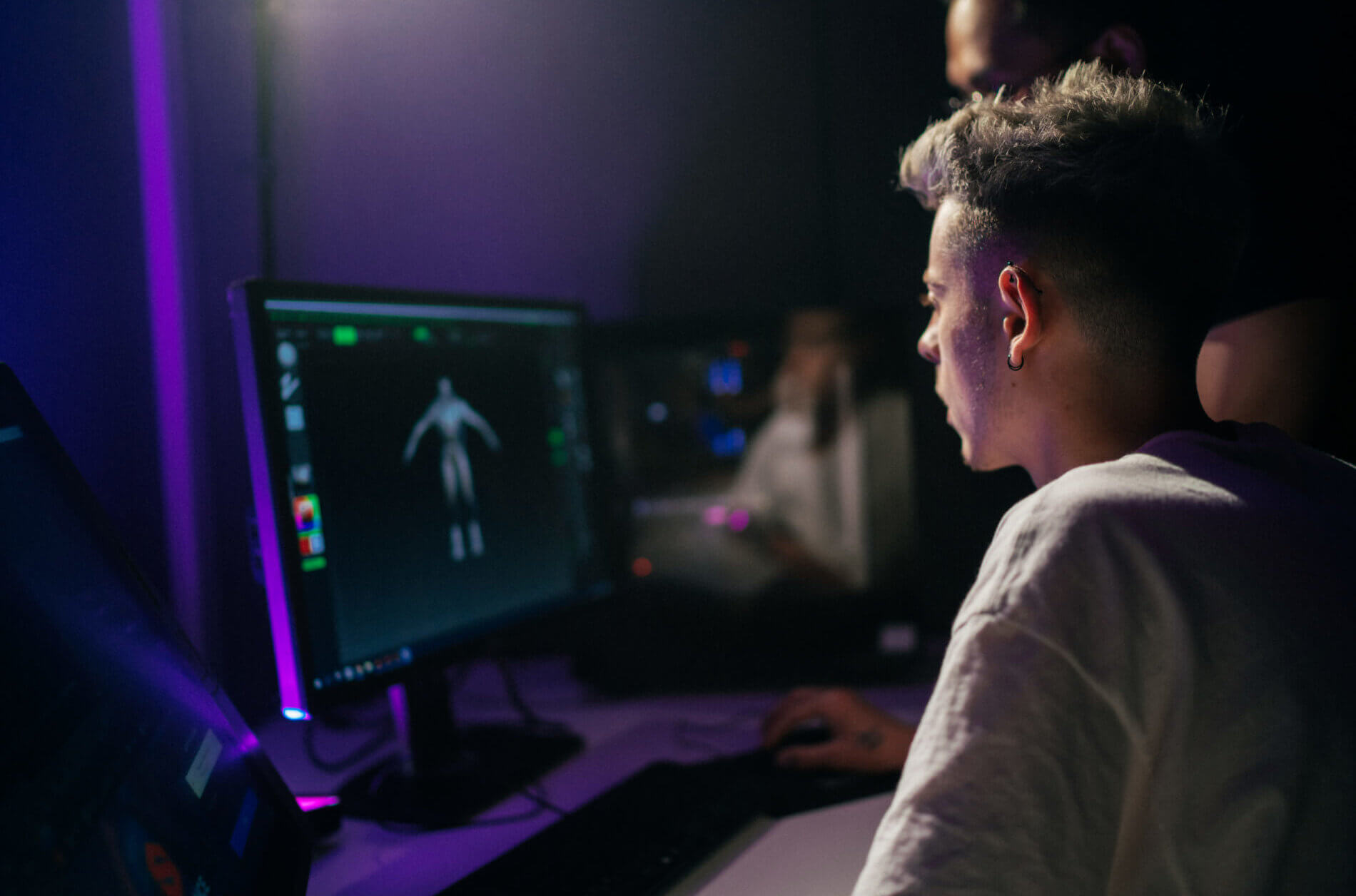
Available at
Dubai
Fees
Bachelor of Animation
Domestic Fees
- Plan A – Yearly Payment – AED 56,790
- Plan B – Trimester Payment – AED 20,670
- Plan C – Monthly Payment – AED 7,340 (9 Payments per Year)
Bachelor of Animation
International Fees
- Plan A – Yearly Payment – AED 56,790
- Plan B – Trimester Payment – AED 20,670
- Plan C – Monthly Payment – AED 7,340 (9 Payments per Year)
Duration(s)
8 Trimesters Full Time
Complete the program across 3 years (8 trimesters)
Bachelor of Animation
Course Durations
8 Trimesters Full Time
Complete the program across 3 years (8 trimesters)
We understand that things can change, so you'll have the flexibility to change your study load throughout your course if you need to.
Start Date(s)
Dubai
2024 – May, Dubai
2024 – September, Dubai
Bachelor of Animation
Start Dates
Dubai
2024 – May, Dubai
2024 – September, Dubai
Entry Requirements
Bachelor of Animation
Domestic Entry Requirements
Domestic Entry Requirements
Minimum age requirements
Academic requirements
English language requirements
International English Language Testing System (IELTS): A band score of 6 or higher for a Higher Education (HE) course and 5.5 or higher for a VET course (only the Academic Test is accepted), OR
Test of English as a Foreign Language (TOEFL): A score of 550 or higher (paper based test), 60 or higher (internet based test) for a Higher Education (HE) course and a minimum score of 527 (paper based test) or 46 (internet based test) for a VET course, OR
Bachelor of Animation
International Entry Requirements
International Entry Requirements
Minimum age requirements
Academic requirements
English language requirements
International English Language Testing System (IELTS): A band score of 6 or higher for a Higher Education (HE) course and 5.5 or higher for a VET course (only the Academic Test is accepted), OR
Test of English as a Foreign Language (TOEFL): A score of 550 or higher (paper based test), 60 or higher (internet based test) for a Higher Education (HE) course and a minimum score of 527 (paper based test) or 46 (internet based test) for a VET course, OR
YOUR CAREER IN ANIMATION BEGINS NOW
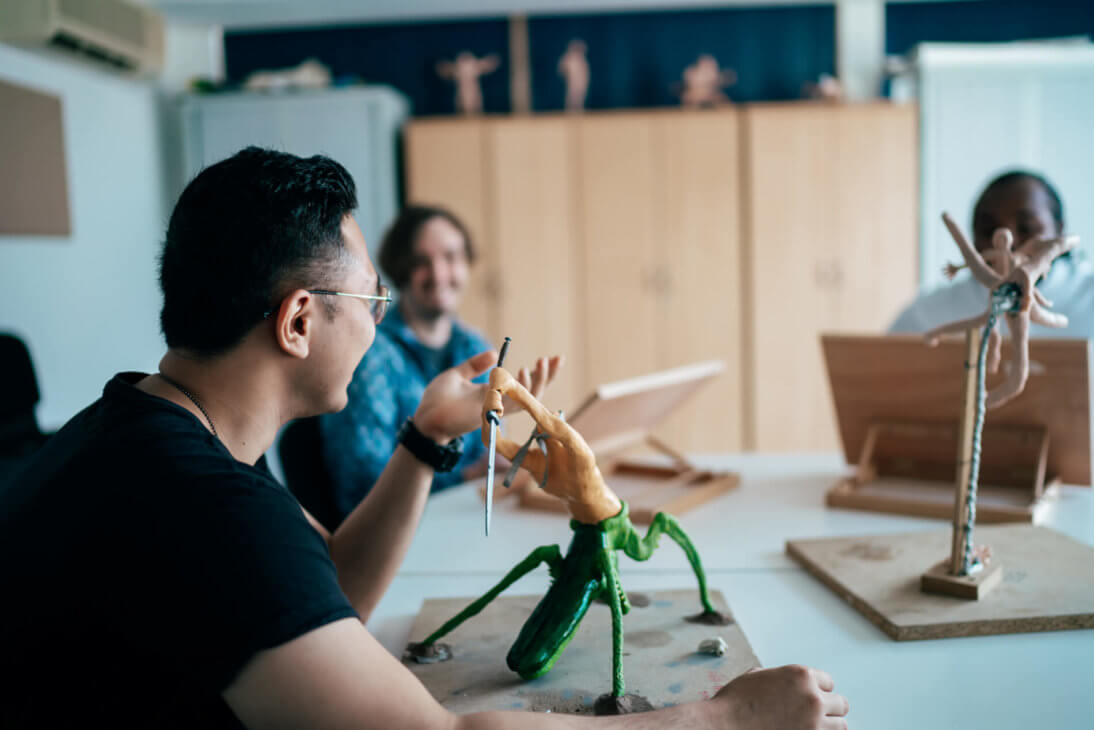
Develop advanced skills in industry-standard software packages
Autodesk 3ds Max, ToonBoom Harmony, Substance Painter, Unreal Engine 4, Unity, SideFX Houdini, Foundry NukeX, Pixologic ZBrush and Adobe Creative Suite.
Practical, immersive training
All work is project based, with no exams. Graduate with a portfolio to share with an employer or first client.
Cross discipline collaboration
Work across film, gaming and audio projects at SAE.
Expand your career
Graduate with a portfolio, work experience, employability and entrepreneurial skills and a network of fellow creatives.
Tools & Software



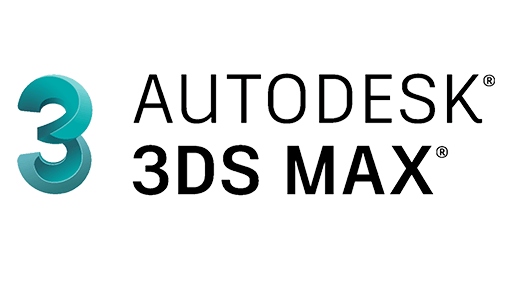

Animation skills
Character animation (2D/3D)
Visual storytelling
3D modelling & computer graphics
Visual effects & motion graphics
Course Structure
The Bachelor of Animation is broken up into three distinct stages over eight trimesters (full time, fast track). Each stage is designed to develop different skills.
Stage 1: Foundations
Develop the essential technical animation skills and the knowledge required to collaborate with other creative media students and professionals.
Credit Points: 10
Develop your reflective, critical and analytical skills and abilities through an enhanced awareness and understanding of the purpose of tertiary education from a personal, societal and professional perspective. In class activities are used to prepare you with the skills and confidence to engage with a range of scholarly frameworks that you will encounter throughout your studies. You will explore the animation discipline through a team presentation, where you will develop group working, thinking and learning skills.
Develop your reflective, critical and analytical skills and abilities through an enhanced awareness and understanding of the purpose of tertiary education from a personal, societal and professional perspective. In class activities are used to prepare you with the skills and confidence to engage with a range of scholarly frameworks that you will encounter throughout your studies. You will explore the animation discipline through a team presentation, where you will develop group working, thinking and learning skills.
Credit Points: 10
As a practice, drawing provides a core skill set for the expression of both concept and form. This unit introduces you to the concepts and methodologies of drawing using a variety of media with an emphasis on drawing from life, including anatomical studies and perspective techniques for environment and character construction.
The unit is an introduction to the general practice of drawing and rendering and specifically helps to scaffold further learning through support for developing sketch-based visual production skills & knowledge.
As a practice, drawing provides a core skill set for the expression of both concept and form. This unit introduces you to the concepts and methodologies of drawing using a variety of media with an emphasis on drawing from life, including anatomical studies and perspective techniques for environment and character construction.
The unit is an introduction to the general practice of drawing and rendering and specifically helps to scaffold further learning through support for developing sketch-based visual production skills & knowledge.
Credit Points: 10
Take a practical first look at modeling, lighting, shading, animation, and rendering to gain a holistic, foundational understanding of computer graphics.
This unit will involve using industry-standard software such as Autodesk 3Ds Max, Maya, and Blender. The practical and theoretical knowledge of 3D production pipelines acquired in this unit will act as a foundation for successive animation units.
Take a practical first look at modeling, lighting, shading, animation, and rendering to gain a holistic, foundational understanding of computer graphics.
This unit will involve using industry-standard software such as Autodesk 3Ds Max, Maya, and Blender. The practical and theoretical knowledge of 3D production pipelines acquired in this unit will act as a foundation for successive animation units.
Credit Points: 10
As the name suggests this unit provides you with an introduction to animation. You will apply the theoretical underpinnings of animation processes via a range of practical explorations and critical analyses. This will provide you with a solid understanding of animation principles and methods that will form the foundation of successive animation units.
As the name suggests this unit provides you with an introduction to animation. You will apply the theoretical underpinnings of animation processes via a range of practical explorations and critical analyses. This will provide you with a solid understanding of animation principles and methods that will form the foundation of successive animation units.
Credit points: 10
This unit will introduce you to the mindset and skillset of the creative entrepreneur, and transform your approach to problem-solving. You will analyse historical and contemporary models of leadership and best practice in entrepreneurship, and use tools for project design that include ideation, problem framing, and pitching. The skills in this unit will assist you in developing your creative thinking, exploration, and experimentation methods, allowing you to experiment with project design and content for creative media.
This unit will introduce you to the mindset and skillset of the creative entrepreneur, and transform your approach to problem-solving. You will analyse historical and contemporary models of leadership and best practice in entrepreneurship, and use tools for project design that include ideation, problem framing, and pitching. The skills in this unit will assist you in developing your creative thinking, exploration, and experimentation methods, allowing you to experiment with project design and content for creative media.
Credit Points: 10
In this unit, you will apply and build upon the foundational animation and computer graphics skills and knowledge that you have learned, to advance your skills via some in-depth, practical activities of 2D/3D character modeling and applied animation techniques.
By undertaking a series of iterative tasks, your static models will become talking moving characters and you will develop the skills and knowledge required to showcase them effectively.
In this unit, you will apply and build upon the foundational animation and computer graphics skills and knowledge that you have learned, to advance your skills via some in-depth, practical activities of 2D/3D character modeling and applied animation techniques.
By undertaking a series of iterative tasks, your static models will become talking moving characters and you will develop the skills and knowledge required to showcase them effectively.
Credit Points: 20
In this unit you will engage in a collaborative studio-based learning environment, to produce a short animation under client direction and in response to a brief. You will be guided through your exploration of the production methods needed to pitch effective creative concepts to potential producers.
By working in small groups (and in accordance with the SAE Group Work Policy), various creative and organisational challenges will be encountered throughout this process, requiring the application of appropriate project management techniques to help ensure the brief is successfully met.
In this unit you will engage in a collaborative studio-based learning environment, to produce a short animation under client direction and in response to a brief. You will be guided through your exploration of the production methods needed to pitch effective creative concepts to potential producers.
By working in small groups (and in accordance with the SAE Group Work Policy), various creative and organisational challenges will be encountered throughout this process, requiring the application of appropriate project management techniques to help ensure the brief is successfully met.
Stage 2: Refine & Expand
Broaden your scope to work on complex multidisciplinary projects in accordance with industry standard practices.
Credit Points: 10
In CIM210 you will be working on interdisciplinary projects that relate to some of the most important concepts in contemporary media production. You will learn practical and analytical skills in order to help you develop your creative powers and meet briefs that take you out of your comfort zone. You will need to bring all of the skills you have learned so far: technical skills, research skills, communication skills and a growth mindset, and be prepared to encounter new concepts and new ways of working.
In CIM210 you will be working on interdisciplinary projects that relate to some of the most important concepts in contemporary media production. You will learn practical and analytical skills in order to help you develop your creative powers and meet briefs that take you out of your comfort zone. You will need to bring all of the skills you have learned so far: technical skills, research skills, communication skills and a growth mindset, and be prepared to encounter new concepts and new ways of working.
Credit Points: 30
In this studio unit, you will work collaboratively on a series of projects set by briefs and led by your Facilitator. In collaboration with your your classmates, you will work towards developing several project milestones within a simulated studio environment with your Facilitator acting as your project manager, executive producer, mentor, and colleague.
Emphasis will be placed on advancing your development of the fundamentals of animation production through conceptualising, planning, and executing rapid animation productions, short films and contributing towards a portfolio. Working to a clear timeline, you will explore a range of skills and workflows in collaborative, cross-discipline, and individual work. This includes focusing on the creative, technical, and project management aspects required for completed animation production. Teamwork, collaborative skills, and engagement with specific feedback processes are emphasised in this unit, as you further refine and reflect on a set of Transferable Skills.
In this studio unit, you will work collaboratively on a series of projects set by briefs and led by your Facilitator. In collaboration with your your classmates, you will work towards developing several project milestones within a simulated studio environment with your Facilitator acting as your project manager, executive producer, mentor, and colleague.
Emphasis will be placed on advancing your development of the fundamentals of animation production through conceptualising, planning, and executing rapid animation productions, short films and contributing towards a portfolio. Working to a clear timeline, you will explore a range of skills and workflows in collaborative, cross-discipline, and individual work. This includes focusing on the creative, technical, and project management aspects required for completed animation production. Teamwork, collaborative skills, and engagement with specific feedback processes are emphasised in this unit, as you further refine and reflect on a set of Transferable Skills.
Credit Points: 10
Media and culture are not simply entertainment, but something that affects the “real world”, our everyday lives, and our worldviews. As such, we will not ask whether media accurately reflect the real world but instead ask how media shape, reinforce, and challenge power structures that influence our understanding of the world and ourselves. This unit takes a ‘critical theory’ approach to analyze media and culture. In this unit, you will explore media texts, contexts and meaning, society and subjectivity, pop culture aesthetics, and critical cultural discourses that inform creative media practices.
Drawing on a range of creative content and analytical frameworks, you will be encouraged to develop ways of thinking about media and culture that demonstrate a broad awareness of aesthetic principles and stylistic trends; subjectivity, agency, ethics, and relations of power; contexts, disciplines and discursive formations. In support of this exploration, you will produce a range of media artifacts that explore and contextualize the relationship of media to culture through individual analysis, collaborative and interdisciplinary creative practice, and critical reflection.
Media and culture are not simply entertainment, but something that affects the “real world”, our everyday lives, and our worldviews. As such, we will not ask whether media accurately reflect the real world but instead ask how media shape, reinforce, and challenge power structures that influence our understanding of the world and ourselves. This unit takes a ‘critical theory’ approach to analyze media and culture. In this unit, you will explore media texts, contexts and meaning, society and subjectivity, pop culture aesthetics, and critical cultural discourses that inform creative media practices.
Drawing on a range of creative content and analytical frameworks, you will be encouraged to develop ways of thinking about media and culture that demonstrate a broad awareness of aesthetic principles and stylistic trends; subjectivity, agency, ethics, and relations of power; contexts, disciplines and discursive formations. In support of this exploration, you will produce a range of media artifacts that explore and contextualize the relationship of media to culture through individual analysis, collaborative and interdisciplinary creative practice, and critical reflection.
Credit Points: 30
In this studio unit, you will work collaboratively on a series of projects, set by briefs and led by your Facilitator. In collaboration with your your classmates, you will work towards developing several projects within a simulated studio environment with your Facilitator acting as your project manager, executive producer, mentor, and colleague.
Emphasis will be placed on advancing your development of intermediate animation production through conceptualising, planning, and executing rapid animation productions, short films and contributing towards a portfolio.
Working to a clear timeline, you will explore a range of skills and workflows in collaborative, cross-disciplinary, and individual work. This includes focusing on the creative, technical, and project management aspects required for completed animation production. Teamwork, collaborative skills, and engagement with specific feedback processes are emphasised in this unit, as you further refine and reflect on a set of Transferable Skills.
In this studio unit, you will work collaboratively on a series of projects, set by briefs and led by your Facilitator. In collaboration with your your classmates, you will work towards developing several projects within a simulated studio environment with your Facilitator acting as your project manager, executive producer, mentor, and colleague.
Emphasis will be placed on advancing your development of intermediate animation production through conceptualising, planning, and executing rapid animation productions, short films and contributing towards a portfolio.
Working to a clear timeline, you will explore a range of skills and workflows in collaborative, cross-disciplinary, and individual work. This includes focusing on the creative, technical, and project management aspects required for completed animation production. Teamwork, collaborative skills, and engagement with specific feedback processes are emphasised in this unit, as you further refine and reflect on a set of Transferable Skills.
Stage 3: Showcase
Execute a project of your own design which is of a high quality and externally published, with the knowledge to commercialise if you choose. You'll also apply your skills through industry work placement.
Credit Points: 20
This is the first unit in a two-part process of developing a collaborative project, designed to meet professional publication standards. In a group, you'll design and execute a full-scale creative project which will be designed to a specific target audience and market of your team's choosing.
Working closely with SAE Project Supervisors, your project will be guided through formal pre-production and production processes to deliver a creative media project. If you are undertaking a specialisation in your course, you will be required to align it with this capstone project as part of the approval process.
This unit is designed to support the pre-production process, long term success of the project and the fair and equitable contribution of group members. You'll present to the panel your forward plan for the project, which demonstrates rigourous pre-production processes to mitigate risk to ensure the project can be delivered on time and to specification.
Once you successfully complete this unit the emphasis of the capstone project development will move away from pre-production into full production mode.
This is the first unit in a two-part process of developing a collaborative project, designed to meet professional publication standards. In a group, you'll design and execute a full-scale creative project which will be designed to a specific target audience and market of your team's choosing.
Working closely with SAE Project Supervisors, your project will be guided through formal pre-production and production processes to deliver a creative media project. If you are undertaking a specialisation in your course, you will be required to align it with this capstone project as part of the approval process.
This unit is designed to support the pre-production process, long term success of the project and the fair and equitable contribution of group members. You'll present to the panel your forward plan for the project, which demonstrates rigourous pre-production processes to mitigate risk to ensure the project can be delivered on time and to specification.
Once you successfully complete this unit the emphasis of the capstone project development will move away from pre-production into full production mode.
Credit Points: 20
In this studio unit, you'llll continue to consolidate and advance a broad range of animation skills in a self-devised specialisation projects with mentorship from your facilitator.
These projects may range from testing ideas and techniques for future animation productions, in addition to exploring cross-discipline projects.
You must demonstrate your ability to creatively and pragmatically scope a production brief with assistance from your facilitator, clearly establishing your aims for the project, and engage in sophisticated feedback processes. You are expected to begin to identify and emulate current industry practices and trends in order to compete as industry professionals. Team work, collaborative skills, research skills, and engagement with specific feedback processes all continue to be emphasised in this unit, as you further refine and reflect on a set of Transferable Skills.
In this studio unit, you'llll continue to consolidate and advance a broad range of animation skills in a self-devised specialisation projects with mentorship from your facilitator.
These projects may range from testing ideas and techniques for future animation productions, in addition to exploring cross-discipline projects.
You must demonstrate your ability to creatively and pragmatically scope a production brief with assistance from your facilitator, clearly establishing your aims for the project, and engage in sophisticated feedback processes. You are expected to begin to identify and emulate current industry practices and trends in order to compete as industry professionals. Team work, collaborative skills, research skills, and engagement with specific feedback processes all continue to be emphasised in this unit, as you further refine and reflect on a set of Transferable Skills.
Credit Points: 20
Using the project plan and pre-production work that you completed in the Major Project Development Unit, you'll adopt a quality framework that will lead to the publication of a final creative piece.
This quality process will be accountable to multiple, external stakeholders and will test your ability to problem solve, evaluate and synthesise information to the standard that we expect from all SAE graduates. Throughout this journey, you will interact with your classmates and other key stakeholders using the processes and systems and that you would have developed throughout your course.
The publication and subsequent success of the final deliverable will represent the broadening and deepening of your professional practice which has occurred during your journey.
Using the project plan and pre-production work that you completed in the Major Project Development Unit, you'll adopt a quality framework that will lead to the publication of a final creative piece.
This quality process will be accountable to multiple, external stakeholders and will test your ability to problem solve, evaluate and synthesise information to the standard that we expect from all SAE graduates. Throughout this journey, you will interact with your classmates and other key stakeholders using the processes and systems and that you would have developed throughout your course.
The publication and subsequent success of the final deliverable will represent the broadening and deepening of your professional practice which has occurred during your journey.
Credit Points: 10
Gain an introduction to the principles of entrepreneurship to create and operate your own creative media small business venture. Through analysing the global media landscape, You'll be able to identify and explore start-up opportunities within the creative industries.
This unit is designed to be done in parallel with your capstone project. You'll apply the skills and knowledge from this unit to formulate a rigorous business case to help you commercialise your capstone project and use it as a basis for a creative media start-up.
Gain an introduction to the principles of entrepreneurship to create and operate your own creative media small business venture. Through analysing the global media landscape, You'll be able to identify and explore start-up opportunities within the creative industries.
This unit is designed to be done in parallel with your capstone project. You'll apply the skills and knowledge from this unit to formulate a rigorous business case to help you commercialise your capstone project and use it as a basis for a creative media start-up.
Credit Points: 10
Future jobs will require workers to learn on the job; focus on relationships with people; have strong communication skills; use a range of transferable skills. Research consistently points to the benefits of students being prepared with documents that are required for job applications, such as a Resume, Cover Letter, and E-portfolio.
In addition, the value of a Work Placement which provides you with professional experience and an opportunity to use skills and knowledge gained from study to complement this.
The Work Placement for SAE Bachelor students requires a minimum of 80 hours at one or more host organisation. Both the student and the host are required to complete an SAE Agreement which formalises the placement.
Future jobs will require workers to learn on the job; focus on relationships with people; have strong communication skills; use a range of transferable skills. Research consistently points to the benefits of students being prepared with documents that are required for job applications, such as a Resume, Cover Letter, and E-portfolio.
In addition, the value of a Work Placement which provides you with professional experience and an opportunity to use skills and knowledge gained from study to complement this.
The Work Placement for SAE Bachelor students requires a minimum of 80 hours at one or more host organisation. Both the student and the host are required to complete an SAE Agreement which formalises the placement.
Credit Points: 10
CRICOS Course Codes
105477A (8 TRIMESTERS)
Australian Qualifications Framework
AQF Level: 7
FULLY ACCREDITED BY TEQSA

Bachelor of Animation Career Outcomes
What jobs will this course lead to?
3D Generalist
3D or 2D Animator
Concept Artist
Motion Graphics
Designer
Storyboard Artist
Media Industry Specialist
FX Artist
Technical Artist
3D Asset Modeler
3D Character Modeler
Junior Rigging TD
Surfacing Artist
Junior Lighting TD
Production Coordinator
Junior Assembly & Layout Artist
Roto Artist
Junior Matchmover and Cleanup
Junior Compositor


